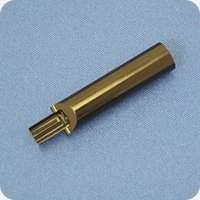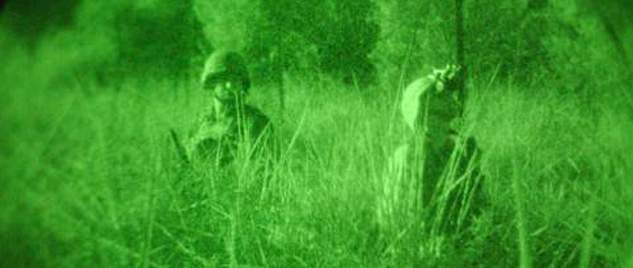
Infrared (IR) imaging is an important focus of military and defense research and development because so much of surveillance and targeting occurs under the cover of darkness. A seemingly impossible task such as imaging a threat moving behind foliage at night is made possible by new developments in IR technology.
The infrared spectrum, adjacent to the visible part of the spectrum, is split into four bands: near (NIR), short-wave (SWIR), mid-wave (MWIR) and long-wave IR (LWIR). The NIR spectrum is typically defined as ranging from the end of the visible spectrum around 900 nm to 1.7 µm. The SWIR spectrum ranges from 1.7 µm to 3 µm. Glass lenses can transmit from visible through the NIR and SWIR region. The SWIR region bridges the gap between visible wavelengths and peak thermal sensitivity of infrared, scattering less than visible wavelengths and detecting low-level reflected light at longer distances (ideal for imaging through smoke and fog). Also, SWIR imaging occurs at 1.5 µm, which is an eye-safe wavelength preferred by the military. Syntec Optics manufactures IR optics for defense imaging applications.
With a long history of providing top quality and delivery of intricate machined plastic parts and metal components, Wordingham Technologies was contacted by a client to make mechanical components for cameras designed to operate within infrared spectrum. This part is for a thermal imaging system. The part geometry along with the GD&T tolerances of .0002 on many features made the processing of this part extremely crucial. The inspection also required a complex fixturing and programming on a CMM to verify.

 (585) 768-2513
(585) 768-2513

